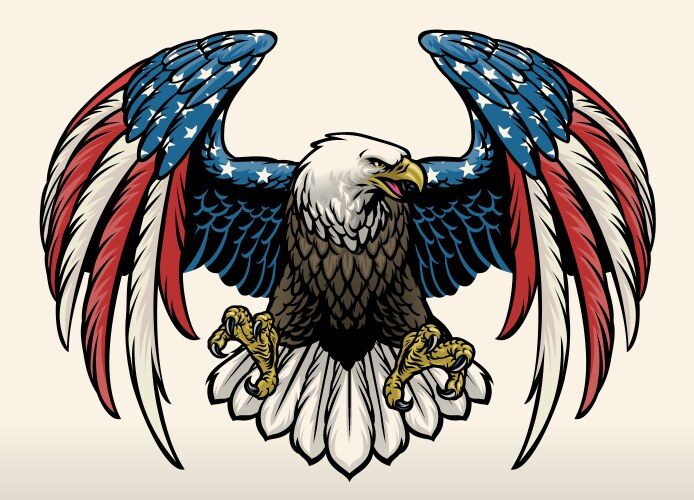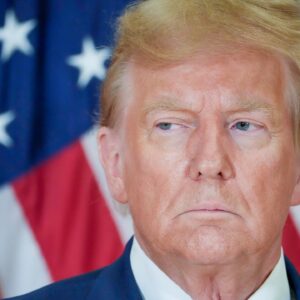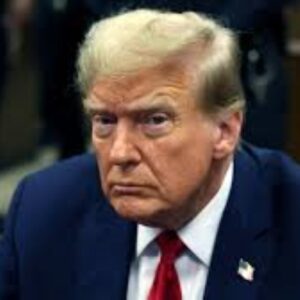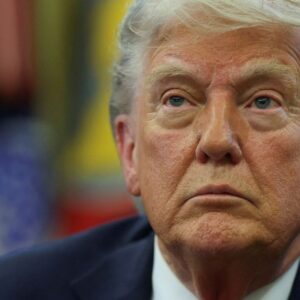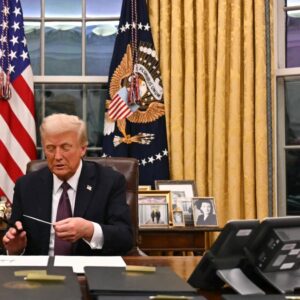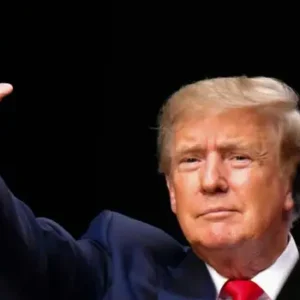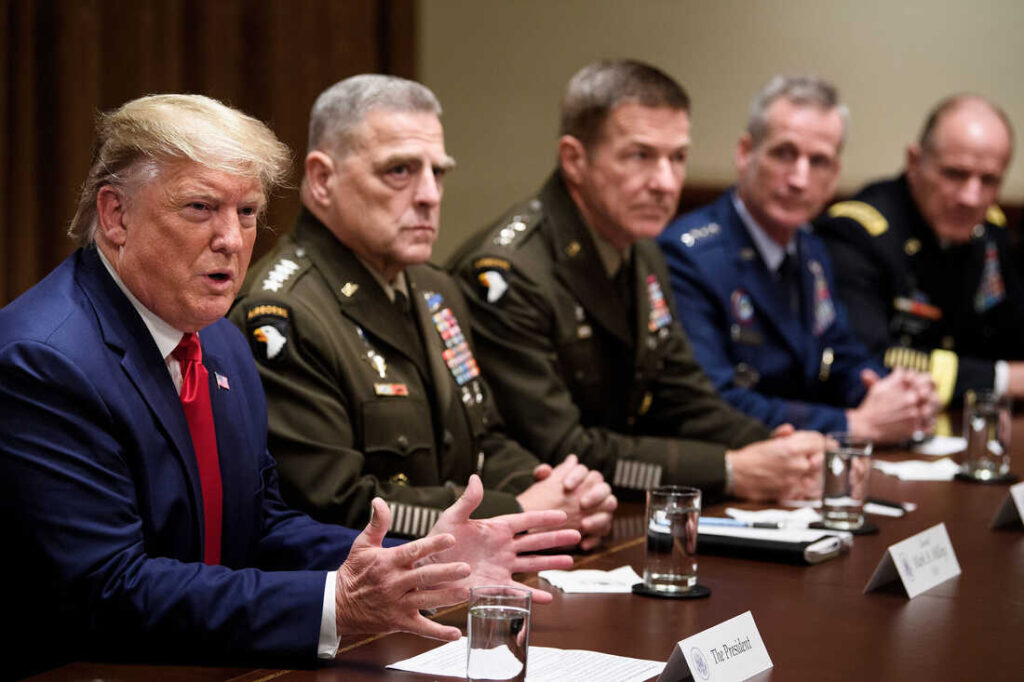
Donald J. Trump, the 45th President of the United States, assumed office on January 20, 2017, bringing with him a populist message, outsider persona, and a bold, often unconventional approach to leadership. As Commander-in-Chief of the U.S. Armed Forces, Trump inherited global conflicts, ongoing counterterrorism operations, and complex international alliances. His tenure was marked by a blend of dramatic rhetoric, strategic recalibrations, and unpredictable decision-making that left a lasting impact on U.S. military and foreign policy.
A Shifting Military Strategy
One of the most prominent aspects of Trump’s approach as Commander-in-Chief was his emphasis on “America First,” which translated into a foreign policy aimed at reducing U.S. involvement in foreign wars and pushing allies to shoulder more of their defense burdens. This strategy was evident in his pressure on NATO members to increase their military spending, arguing that the U.S. had been unfairly carrying the alliance’s financial weight. Though his confrontational style unsettled traditional allies, NATO defense spending did increase during his administration.
Trump also focused on modernizing the U.S. military and increasing defense spending. Under his leadership, the Pentagon saw budget increases, with military spending reaching over $700 billion annually. He oversaw the creation of the United States Space Force in December 2019, the first new military branch since the Air Force was established in 1947, reflecting his administration’s focus on space as a new domain of warfare.
Combating Terrorism and Targeted Strikes
Trump’s time as Commander-in-Chief was defined by a continuation—and in some cases, intensification—of America’s fight against terrorism. He inherited campaigns against ISIS in Iraq and Syria, and by 2019, his administration declared the territorial defeat of the Islamic State’s so-called caliphate. Trump took a hands-off approach, allowing the Pentagon more autonomy in conducting operations, which led to increased airstrikes in regions like Afghanistan and Somalia.
One of the most controversial and consequential actions during his presidency was the decision to authorize the killing of Iranian General Qassem Soleimani in January 2020. The drone strike near Baghdad International Airport was justified by Trump as a preemptive move to prevent imminent attacks on American personnel. The assassination dramatically escalated tensions with Iran, bringing the two nations to the brink of open conflict and raising questions about the president’s war powers and decision-making process.
Tensions with Military Leadership
Trump’s relationship with the military leadership was tumultuous and often marked by friction. His decisions, including the abrupt withdrawal of U.S. troops from Syria in 2019, were heavily criticized by military commanders and lawmakers from both parties. The move abandoned Kurdish allies who had fought alongside U.S. forces against ISIS and was seen by many as a betrayal that weakened American credibility.
Throughout his term, Trump publicly clashed with senior military officials. He often portrayed himself as more in touch with rank-and-file soldiers than with Pentagon brass, whom he occasionally accused of seeking endless wars to benefit defense contractors. In 2020, reports that Trump had referred to fallen American service members as “losers” and “suckers” sparked outrage, although he and his allies denied the claims.
These tensions came to a head during the George Floyd protests in the summer of 2020. Trump’s threat to invoke the Insurrection Act and deploy active-duty military to quell protests was met with resistance from former and current military leaders, including then-Secretary of Defense Mark Esper and former Defense Secretary James Mattis, who publicly criticized the president for politicizing the military and undermining civil-military norms.
Troop Withdrawals and Global Footprint
True to his campaign promises, Trump sought to reduce the American military presence abroad. He ordered significant troop reductions in Afghanistan, Iraq, and Syria, with the goal of ending what he called “forever wars.” While many Americans supported the idea of bringing troops home, critics argued that the withdrawals were hastily executed and lacked strategic foresight, potentially destabilizing regions and emboldening adversaries.
His administration also began withdrawing troops from Germany, further straining U.S. relations with European allies. Trump viewed such deployments as outdated Cold War arrangements that no longer served American interests, though the Pentagon under the Biden administration later reversed some of those decisions.
Veterans Affairs and Military Families
On the domestic front, Trump touted reforms at the Department of Veterans Affairs (VA) as a significant achievement. His administration expanded the Veterans Choice Program, allowing more veterans to seek care outside the VA system, and passed the VA MISSION Act, aiming to improve healthcare delivery. These reforms were generally well-received by veterans’ advocacy groups, although the long-term effectiveness remains a topic of debate.
Trump also highlighted his support for military families through increased funding for base improvements and military pay raises. However, his often divisive rhetoric and controversies surrounding his respect for military service created a mixed legacy among service members and their families.
Legacy and Lasting Impact
Assessing Trump’s performance as Commander-in-Chief is complex. Supporters argue that he pursued a pragmatic foreign policy that avoided new wars, prioritized American interests, and demanded greater accountability from allies. They see his approach as a necessary disruption of the foreign policy establishment.
Critics, however, contend that Trump’s erratic decision-making, disregard for military advice, and transactional view of alliances undermined America’s global leadership and military cohesion. His tenure was characterized by unpredictability, a lack of coherent strategy, and a willingness to politicize the military, which many saw as damaging to the nation’s long-standing civil-military balance.
Conclusion
Donald Trump’s time as Commander-in-Chief was unlike any other in modern American history. He redefined the role in his own image—brash, unconventional, and often controversial. Whether one sees his military leadership as refreshingly bold or dangerously impulsive, it undeniably left an imprint on U.S. military policy and global standing. As the nation continues to grapple with the consequences of his decisions, the Trump era serves as a pivotal case study in the evolving nature of American military leadership and presidential power.
